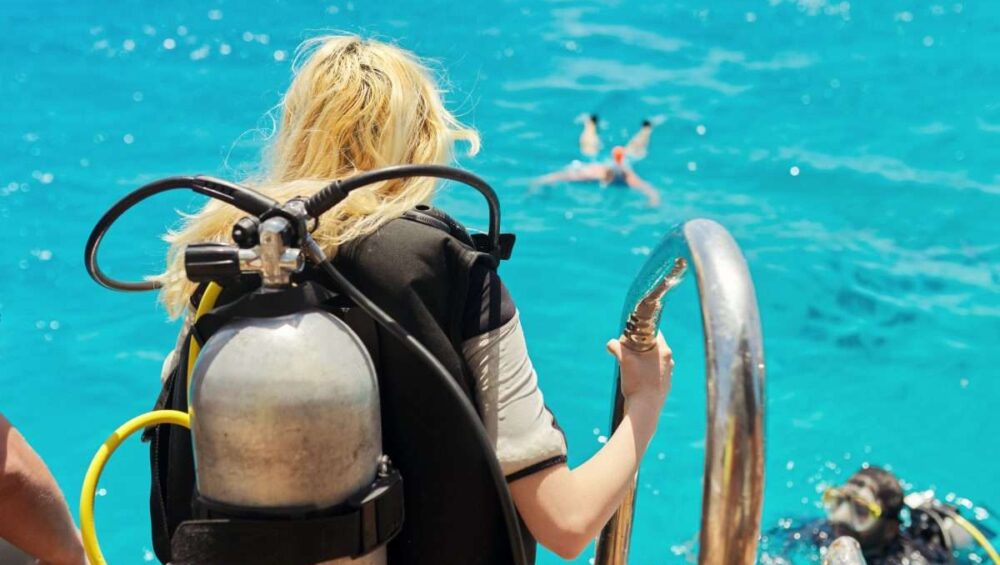Qatar has a rich cultural heritage that can be traced back to ancient pearl diving, which played a significant role in shaping the economy and society of the country. The pearl trade was once the main source of income for Qatar, and the tradition of pearl diving was passed down from generation to generation. Today, the pearl diving industry in Qatar is a modern, sophisticated operation that continues to thrive and contribute to the country’s economy. In this guide, we will explore the history of pearl diving in Qatar, from its traditional roots to its present-day status as a modern industry.
Significance of Pearl Qatar:
Pearl Qatar, also known as Pearl Island, is an artificial island located in the Arabian Gulf and is one of the most significant developments in the history of Qatar. The project was launched in 2006 as part of the country’s vision to transform itself into a world-class destination for luxury living and tourism.
The island is a symbol of Qatar’s rapid economic development and commitment to creating new and innovative projects that enhance its profile as a leading destination for tourists and investors.
Pearl Qatar is unique in many ways, with its state-of-the-art infrastructure and world-class amenities, making it a location that offers an unparalleled quality of life. The island is home to various residential, commercial, and leisure developments, including luxury homes, shopping malls, marinas, and parks.
The luxurious residential properties are designed to the highest standards and offer residents access to world-class amenities like private beaches, swimming pools, and spas.
The development of Pearl Qatar has also had a significant impact on the country’s tourism industry, attracting tourists from all over the world who are drawn to the island’s luxurious lifestyle and unique attractions. The island has become a popular spot for tourists looking for a unique blend of modern amenities and traditional Qatari culture.
The marinas on the island provide visitors with access to the rich waters of the Arabian Gulf and allow them to experience the vibrant marine life of the region.
In addition, Pearl Qatar is also home to several prestigious international schools, providing residents with access to a high-quality education system.
The island is also home to several international businesses, making it a hub for commerce and investment. The island’s development has created employment opportunities for residents, helping to support the growth of the country’s economy.
Ancient Pearl Diving in Qatar:
Pearl diving has a long history in the Gulf region, with evidence of the pearl trade dating back to the Roman Empire. The ancient pearl trade in Qatar was established by the mid-19th century and became a major source of income for the country. Pearl divers would sail out to the shallow waters of the Persian Gulf in traditional wooden boats known as dhows, equipped with simple tools such as diving weights, ropes, and baskets to collect pearls.
Pearl diving was a physically demanding and dangerous profession, with divers often working for extended periods of time in the deep waters of the Persian Gulf. However, it was an essential part of life for many communities in Qatar, and the tradition was passed down from generation to generation. The pearls collected by the divers would then be sold in the markets, providing a source of income for families and communities.
The Decline of the Traditional Pearl Diving Industry in Qatar:
The traditional pearl diving industry declined rapidly in the mid-20th century due to several factors, including the revelation of oil in Qatar and the introduction of cultured pearls.
What are Cultured Pearls?
Cultured pearls are produced by introducing a bead or a piece of mantle tissue into a mollusk, which then grows around it, forming a pearl. This new technology made it possible to produce pearls on a large scale, which resulted in a drop in the demand for natural pearls and a decline in the traditional pearl diving industry.
How are these Pearls produced?
Cultured pearls are grown and harvested in mollusks through human intervention. Unlike natural pearls, which are formed accidentally, cultured pearls are created by introducing a foreign object, known as a nucleus, into the mollusk, which then begins to produce layers of nacre around it, forming a pearl. Creating a cultured pearl typically takes one to several years, depending on the mollusk species and the desired size and quality of the pearl.
Cultured pearls are widely popular due to their affordability and consistent quality. They come in different forms, sizes, and colors, making them accessible to consumers. In addition, the advances in pearl culturing techniques have made it possible to produce indistinguishable from natural pearls, which were once considered the most valuable and sought-after pearls.
These are also considered more environmentally friendly than natural pearls. Harvesting natural pearls involves removing large numbers of mollusks from their natural habitats, which can hurt the environment. Cultured pearl farming, on the other hand, is a sustainable process that uses a small number of mollusks, reducing the impact on the environment and making it a more responsible choice for consumers.
These pearls are a popular and affordable option for consumers who want to enjoy the beauty and elegance of pearls. Additionally, the environmentally friendly nature of cultured pearl farming makes it a responsible choice for consumers looking to make a difference.
Impact of Decline:
The impact of the decline was significant, with many pearl divers losing their livelihoods and communities losing their main source of income. However, the tradition of pearl diving was preserved, and its cultural significance was recognized by the government, which established the Qatar Pearl Museum to showcase the history of the industry and its role in the country’s development.
The Rise of the Modern Pearl Diving Industry:
In the late 20th century, the pearl diving industry in Qatar started to come back due to a renewed interest in natural pearls and the development of new technologies that made it possible to produce high-quality pearls.
The modern pearl diving industry in Qatar is a highly sophisticated operation that incorporates the latest advancements in technology and equipment to produce some of the finest pearls in the world.
Benefits of pearl diving in Qatar:
The benefits of pearl diving in Qatar are numerous, with the industry playing a significant role in the country’s economy. The modern pearl diving industry provides employment opportunities for many people and contributes to the growth of the country’s tourism industry. The production of high-quality pearls also contributes to developing the luxury goods market, with many international brands using Qatar-produced pearls in their products.
The Present and Future of Pearl Diving in Qatar:
Today, the pearl diving industry in Qatar is thriving, with the country producing some of the finest pearls in the world. Manufacturing has come a long way since its traditional roots, incorporating the latest advancements in technology and equipment to produce high-quality pearls.
The future of the pearl diving industry in Qatar looks bright, with the government investing in developing new technologies and techniques to improve production and quality. The government is also committed to preserving the cultural heritage of pearl diving, with initiatives such as the Qatar Pearl Museum and the annual Pearl Diving Festival, which celebrate the industry’s rich history and importance to the country’s culture.
Final Remarks:
The history of pearl diving in Qatar, Experience Qatar provides a help in, testament to the country’s rich cultural legacy and its impact on the growth of the nation. From its traditional roots as a main source of income for families and communities to its modern-day status as a thriving industry, pearl diving has played a considerable role in shaping the economy and society of Qatar. As the nation continues to invest in the development of the pearl diving industry, its future looks bright, and its cultural significance will continue to be celebrated for generations.




